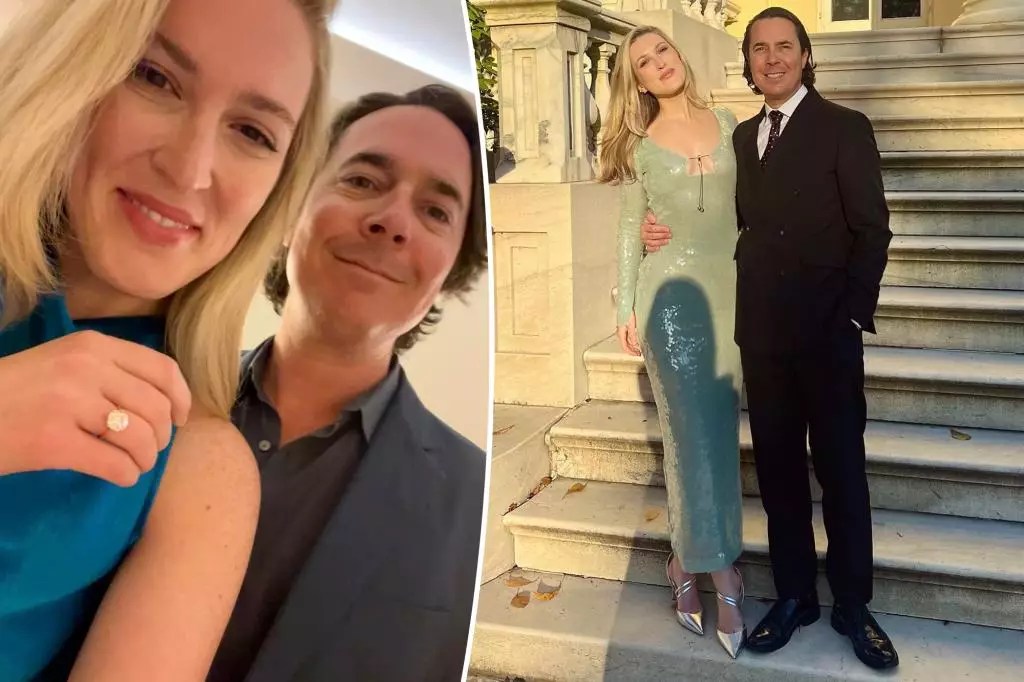The world of political journalism often mirrors the tumultuous narratives of the politicians it covers. The recent saga involving former New York Magazine correspondent Olivia Nuzzi and fellow journalist Ryan Lizza exemplifies this convergence of personal and professional lives. Their tumultuous relationship, punctuated by allegations of blackmail, legal maneuvers, and public fallout, unveils a troubling layer to the ethics of media, intimacy, and personal conduct among high-profile figures.
What began as an energetic and seemingly passionate affair between Nuzzi and Lizza rapidly spiraled into a public controversy that included allegations of threats and deceit. Nuzzi had come into the limelight not merely for her journalistic prowess but also through her high-stakes involvement with political figures, a factor that undoubtedly enhanced public interest in her affair with Ryan Lizza. Nuzzi’s request for a restraining order, claiming threats to her life and career, highlighted the deeply personal stakes in their relationship. The implications of such a request also sent shockwaves through the media community, prompting questions about the boundaries of personal relationships within the high-pressure environment of journalism.
Despite the sensational nature of these revelations, it is critical to approach the situation with caution. Public figures wield immense power not just in their political statements but in the narratives they construct about their lives. Nuzzi’s accusations against Lizza suggest a chilling attempt to manipulate public perception, an act that embodies the potential dangers of utilizing litigation in what could be merely personal grievances. The assertion that Lizza had threatened her with public exposure reflects the darker corners of romantic entanglements within the industry.
The Aftermath of Public Exposure: Legal Battles and Professional Ramifications
In a startling turn of events, Nuzzi decided to withdraw her request for a restraining order, citing concerns that this ongoing feud posed a threat to her safety and wellbeing. This move significantly changes the narrative arc from one of victimization to a more complex dialogue about the motives behind such legal maneuvers. Ryan Lizza’s vehement rebuttal, referring to Nuzzi’s accusations as a “public relations strategy,” reflects the shifting tides of personal grievances spilling into the public arena. The subject of authenticity in journalism comes to the forefront, as Lizza’s statement blandly accuses Nuzzi of using fabricated claims for her own benefit.
Moreover, the media landscape must grapple with the responsibilities that accompany high-profile relationships. While Nuzzi’s trajectory at New York Magazine was purportedly safeguarded as unbiased in light of an independent review, the mere hint of impropriety taints journalistic credibility. The decision for her to part ways with the magazine poses questions about how personal relationships influence professional opportunities, and whether public scrutiny can prompt ethically beneficial decisions.
The incident between Nuzzi and Lizza serves as a poignant reminder of the complexities involved in romantic relationships among public figures, particularly within journalism. The public’s reception of their affair—and the subsequent fallout—illustrates how personal lives can become fodder for broader discussions about ethics in media. In a field where trust is paramount, what does it mean for journalists to navigate personal affairs in such a public sphere?
Reading between the lines, the implications of this affair extend beyond the couple. Aspiring journalists may find themselves questioning the intersection of their personal and professional lives, as well as the potential ramifications of their choices. As the boundaries become increasingly blurred, a larger conversation about ethical standards must be prioritized within journalism schools and industry practices.
Ultimately, the saga of Olivia Nuzzi and Ryan Lizza unfolds as not only a personal dispute but as a critical investigation into the ethical landscapes of journalism and human relationships. As public sentiment oscillates between empathy and scandal, the story serves as a cautionary tale for journalists navigating their own lives in the public eye. In an age where the personal often bleeds into professional realms, cultivating integrity and transparency may be the only way forward in preserving credibility amidst an ever-watchful audience.


Leave a Reply